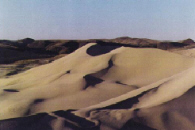

| a |
  |
| a |
 |
Assessment of Discipline Maturity and Needs With an enhanced understanding of discipline research interests and the broader idea of using biological processes to control the engineering behavior of soils, participants were charged to assess the maturity and needs of their respective discipline. To accomplish this, participants were grouped into the following discipline areas: Each group considered soil as an open reactor system to deliver and control specific engineering properties and functions. They identified the primary “state variables”, the first-order factors, for their discipline that must be assessed/understood/quantified to determine if a proposed bio-soil process would be feasible/effective. After ranking these variables in order of priority, the “maturity” (i.e. level of understanding, ability to measure and quantify, ability to model) of each state variable was assessed on a scale of 1 (low) to 5 (high). After each group completed the exercise participants reassembled and shared their respective assessments. The “state variables” ranked with low “maturity” effectively list the primary hard science and engineering research needs in each respective discipline. These should/could be considered among the primary research needs for each respective discipline. A summary of each discipline’s self assessment follows: Geotechnical Engineering
Geochemistry & Biogeochemistry
Back to Top
Overarching State Variables
These overarching state variables are generally understood at the micro-scale with some level of idealization (e.g. uniform soil gradation, limit microbial diversity) and at the macro-scale in terms of average bulk properties (e.g. sandy soil, aerobic microbial dominant). In order to control biological processes for engineering purposes at the macro-scale (tens of cubic meters), the micro-scale processes must be up-scaled in a rigorous manner that successfully captures the relevant hard science and engineering. The overarching state variables are the primary interdisciplinary research needs that must be addressed to realize the benefits of controlling biological processes for engineering purposes at the full scale. As such, they require significant hard science and engineering research and should be primary research issues for existing as well as future research funding initiatives. |
©2007 Bio-Soil Interactions & Engineering << Overview - Motivation - Opportunities - People - Workshop - Key Contacts - Members Only |